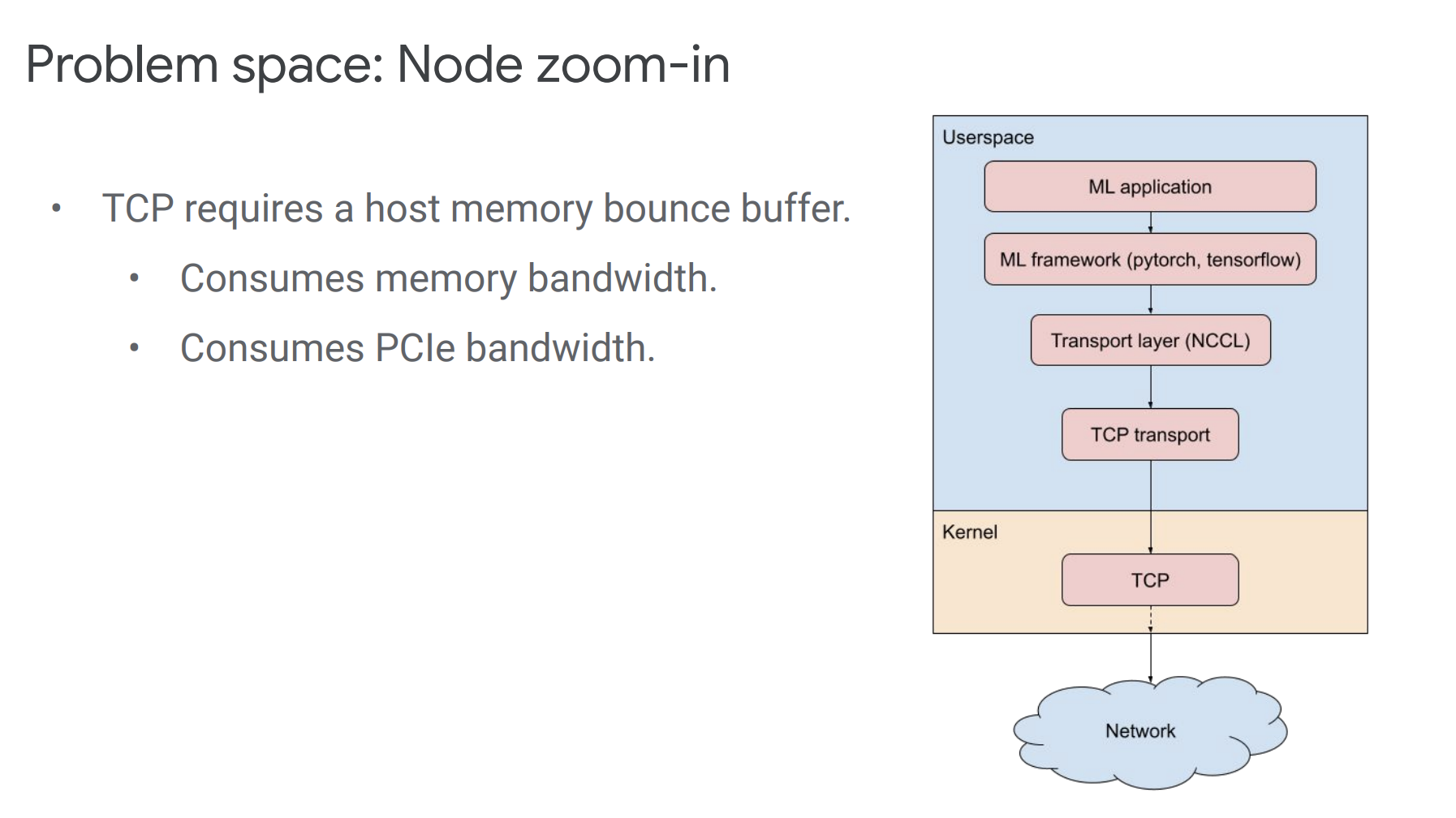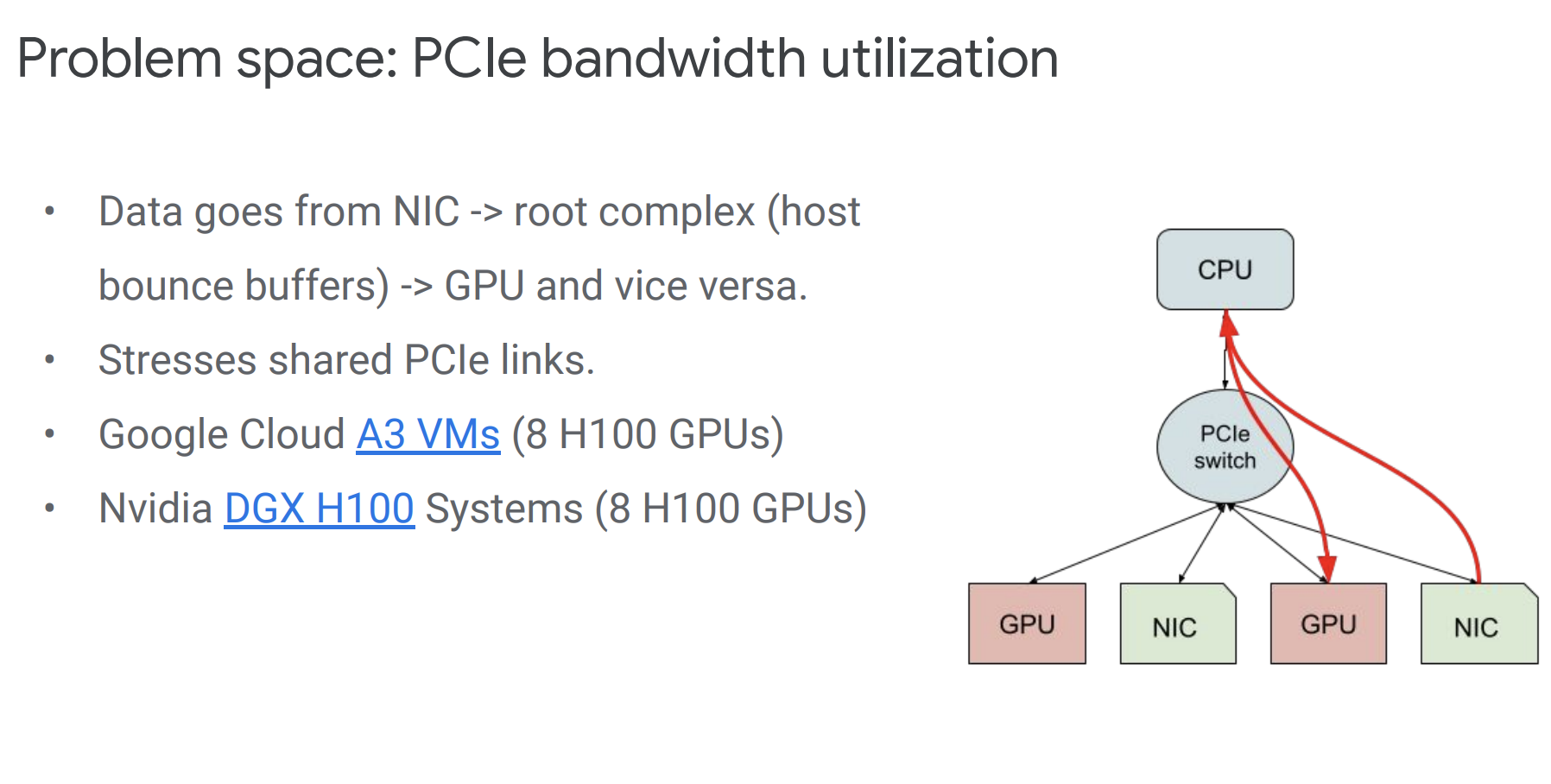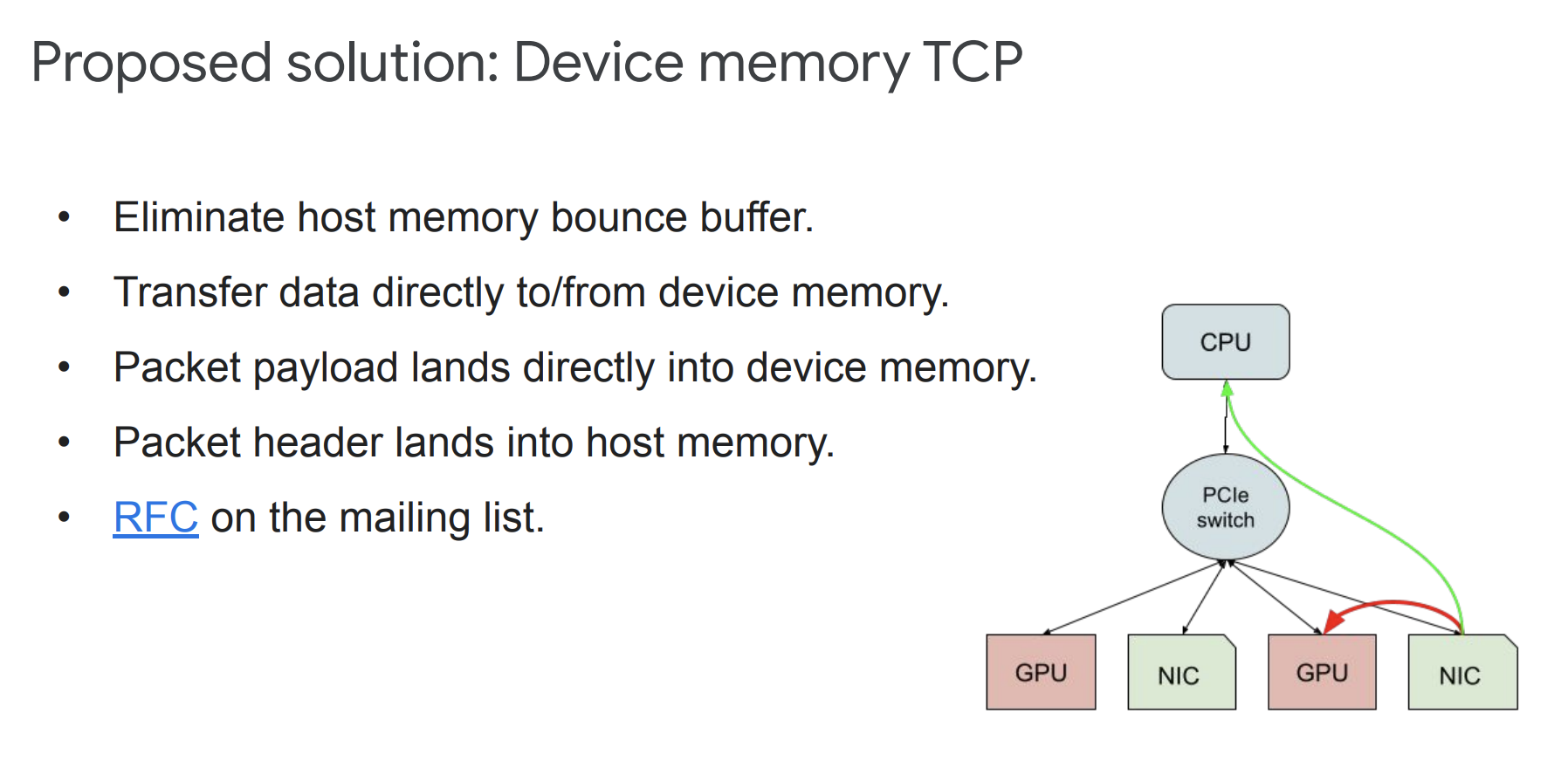Notes about Device Memory TCP
本文将mark下Device Memory TCP相关notes。
Overview
Device memory TCP is a proposal for transferring data to and/or from device memory efficiently, without bouncing the data to a host memory buffer.
Problem



A large amount of data transfers have device memory as the source and/or destination. Accelerators drastically increased the volume of such transfers. Some examples include:
- ML accelerators transferring large amounts of training data from storage into GPU/TPU memory. In some cases ML training setup time can be as long as 50% of TPU compute time, improving data transfer throughput & efficiency can help improving GPU/TPU utilization.
- Distributed training, where ML accelerators, such as GPUs on different hosts, exchange data among them.
- Distributed raw block storage applications transfer large amounts of data with remote SSDs, much of this data does not require host processing.
Today, the majority of the Device-to-Device data transfers the network are implemented as the following low level operations: Device-to-Host copy, Host-to-Host network transfer, and Host-to-Device copy.
The implementation is suboptimal, especially for bulk data transfers, and can put significant strains on system resources, such as host memory bandwidth, PCIe bandwidth, etc.
Proposal

We attempt to optimize this use case by implementing socket APIs that enable the user to:
- send device memory across the network directly, and
- receive incoming network packets directly into device memory.
Packet payloads go directly from the NIC to device memory for receive and from device memory to NIC for transmit. Packet headers go to/from host memory and are processed by the TCP/IP stack normally.
The NIC must support header split to achieve this. i.e. the capability to split incoming packets into a header + payload and to put each into a separate buffer. Device Memory works by using device memory for the packet payload, and host memory for the packet headers.
Advantages
- Alleviate host memory bandwidth pressure, compared to existing network-transfer + device-copy semantics.
- Alleviate PCIe BW pressure, by limiting data transfer to the lowest level of the PCIe tree, compared to traditional path which sends data through the root complex.
参考资料: